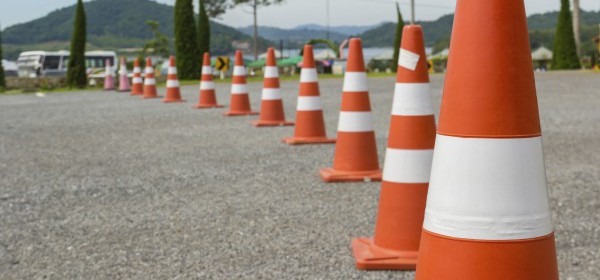Editors Note: In an effort to provide the best employee benefits solutions to our clients, their employees, and their employees’ families in the automotive, roads, and fuels industry, the following is another installment in our ongoing series of educational bulletins designed to inform and protect our audience. Each segment of this series been taken from the archives of NARFA’s Automotive Industries Compensation Corporation (AICC) program and is designed to help inform, prepare, and protect businesses and their people from the everyday hazards within their workplace and beyond.
Eliminating Workplace Hazards Using Engineering Design
Eliminating workplace hazards is not a one-and-done or set-it-and-forget-it action. It requires a constantly evolving process powered by workplace safety tips, company safety strategies and policies—as well as adherence to accident prevention advice from top industry leaders.
Unfortunately, at NARFA we have seen many cases in which workplace hazards exist, but could have been eliminated through proper engineering design. As an example, imagine a new facility is constructed with upper storage areas, but no freight elevator is installed—so employees still carry materials by hand to the second floor level. We have seen this happen several times when newly built auto dealerships open their doors, and we have also seen the purchase of equipment without safety devices; safety devices that would provide maximum protection to employees when operating equipment.
So, why does this happen? Why do workplace hazards exist so regularly?
It is common that safety design measures are not considered during construction of various facilities. And this is because purchasing departments very often purchase equipment without input from the safety department or operation personnel. Also, because their main responsibility is to purchase equipment at the lowest cost, optional safety devices are eliminated or the safest and/or most efficient equipment is not purchased.
In order to reduce/eliminate this problem, all departments, including safety personnel, operations, and senior management should be involved. The Centers for Disease Control and Prevention suggests as part of its Workplace Safety & Health Topics series to establish a program called, “Prevention Through Design.”
What is Prevention Through Design?
The CDC describes the Prevention through Design National initiative as “one of the best ways to prevent and control occupational injuries, illnesses, and fatalities.” The mission of the initiative, according to the CDC, is to prevent or reduce occupational injuries, illnesses, and fatalities through the inclusion of prevention considerations in all designs that impact workers.
This mission can be achieved by:
- Eliminating hazards and controlling risks to workers to an acceptable level “at the source” or as early as possible in the life cycle of items or workplaces.
- Including design, redesign and retrofit of new and existing work premises, structures, tools, facilities, equipment, machinery, products, substances, work processes and the organization of work.
- Enhancing the work environment through the inclusion of prevention methods in all designs that impact workers and others on the premises.
– CDC.gov
The CDC believes the comprehensive approach, which includes worker health and safety in all aspects of design, redesign and retrofit, will provide a vital framework for saving lives and preventing work-related injuries and illness is the roadmap.
In addition to the CDC, the Occupational Safety and Health Administration (OSHA) also places a heavy emphasis on the effects proper engineering design can have on workplace safety. Calling it the first and best strategy, OSHA emphasizes eliminating workplace safety hazards at the source.
“The basic concept behind engineering controls is that, to the extent feasible, the work environment and the job itself should be designed to eliminate hazards or reduce exposure to hazards.”
– OSHA
OSHA states engineering controls can be simple in some cases, as long as they are based on the following principles:
- If feasible, design the facility, equipment, or process to remove the hazard or substitute something that is not hazardous.
- If removal is not feasible, enclose the hazard to prevent exposure in normal operations.
- Where complete enclosure is not feasible, establish barriers or local ventilation to reduce exposure to the hazard in normal operations.
At NARFA, we strongly believe that implementing the proper engineering design within the work environment is key to eliminating workplace safety hazards.
Contact us to learn more about what other benefits administration services we offer, or to hear more about the culture of company safety that we cultivate as part of our AICC worker’s compensation coverage program. And don’t forget to stay connected with our Health & Wellness Safety Tips—we’re always adding more tips to help you and your employees create workplace safety
Recent Posts
IRS Guidance on Nutrition, Wellness, and General Health Expenses
The Internal Revenue Service (IRS) has recently highlighted that costs associated with nutrition, wellness, and general health do not typically qualify as reimbursable medical expenses [...]
HSAs Today and Every Day: A Triple Threat Against Rising Healthcare Costs
The healthcare landscape is constantly evolving, and in 2024, rising costs remain a top concern for both employers and employees. Fortunately, Health Savings Accounts (HSAs) [...]
April Showers Don’t Cause Accidents (Distracted Driving Does): Stay Safe on the Road This Month (and Every Month)
Spring is here, and with it comes April's designation as Distracted Driving Awareness Month. While the changing seasons and blooming flowers might tempt you to [...]




